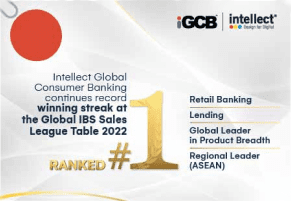To those that live it, the speed of technological progress in this digital age is a blur. It can be overwhelming; a constant cycle of innovation and obsolescence. This landscape becomes more manageable when we take a step back realise that truly big changes – ones that redefine business models – don’t happen as often or as obviously as we imagine.
Consider the last five decades.
In the early 70s, banks that pioneered the use of technology focused predominantly on automation. This was the early digital. Then came globalisation and the internet. This was the second era, where the focus was on rampant innovation, particularly in terms of new products and rapid go to market.
The ‘Digital Era’, also dubbed ‘experience economy’ emerged next. The word ‘Digital’ received the maximum amount of global attention during this period, commanded staggering resources and realigned business roles (enter Chief Digital Officer). However, come to think of it, much of the focus was around mobility, getting services on the phone. It was still a challenge to go omni-channel, even more so in ensuring the same experience across channels.
The digital era has been characterised by:
- The promise of new markets, new opportunities and micro-isation.
- A very real prospect of disintermediation
- The baby boom of FinTechs
Digital has opened a plethora of opportunities on one side and has exposed the threat of disintermediation on the other. For a bank to stand its ground, it must now become a Challenger in every sense of the word.
A NEW THRESHOLD
It is often said that every successful story is a tale of constant adaption,revision and change. With the tide of Digital here to stay, the banking industry, now more than ever, is forced to rethink strategies to deliver holistic and impactful outcomes. How do banks remain agile and competitive and offer the quintessential ‘Amazon experience’ to their customers?
And with customers themselves besieged by choices from a rash of new FinTechs, how does a bank become the Primary bank or Everyday bank for them?
Taking on FinTechs on their own turf is a bad idea. They are nimble, can innovate, and have proven themselves capable of making better use of technology. They have on their side personalization, speed and economy. Where they fall short is in being able to provide the sort of holistic financial experience that only digital banks can provide.
The difference between a FinTech and a Bank is the difference between a quick sandwich from the cart and a wholesome meal. The FinTech sandwich will never really take over mealtime, however popular it might get. And it is only a matter of time before that wholesome meal is made more portable than it is today.
As pundits and FinTechs themselves realise that forecasts of the ‘great FinTech takeover’ are premature, Banks find themselves on a new threshold. Spurred by possibilities of collaboration, and bolstered by new technologies that make change more modular and less painful, a new proposition is emerging, unmatched in scope and unbeatable in value. We call it the 5E Proposition.
Author :
Padmini Sharathkumar
Business Head,
CBX-Retail
Padmini comes with a unique combination of both technology and banking domain expertise. Prior to her role as the head of business enablement, she headed multiple department, including global marketing and the Chairman’s office. Prior to joining Polaris, she worked with the Treasury and Technology businesses at American Express, where her Employee Survey Action Team (ESAT) was the recipient of the Chairman’s Award.







